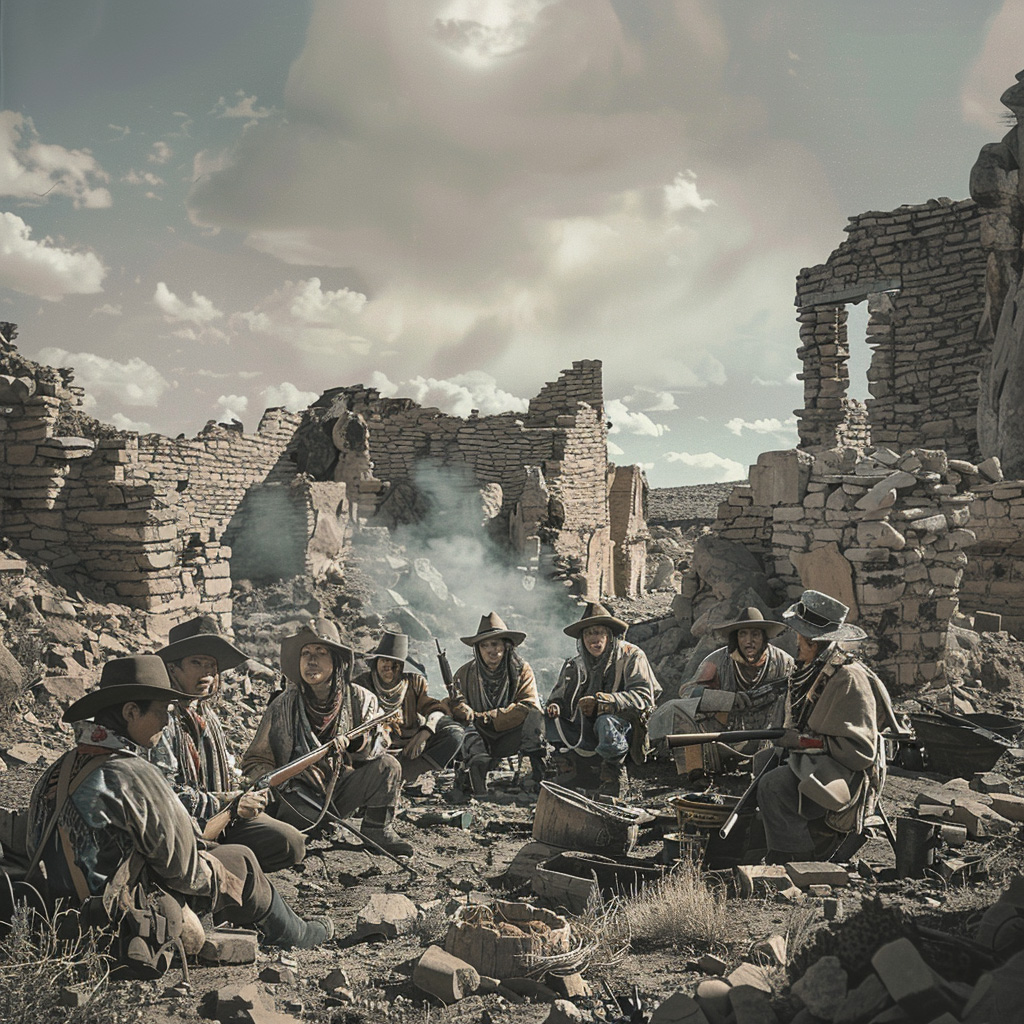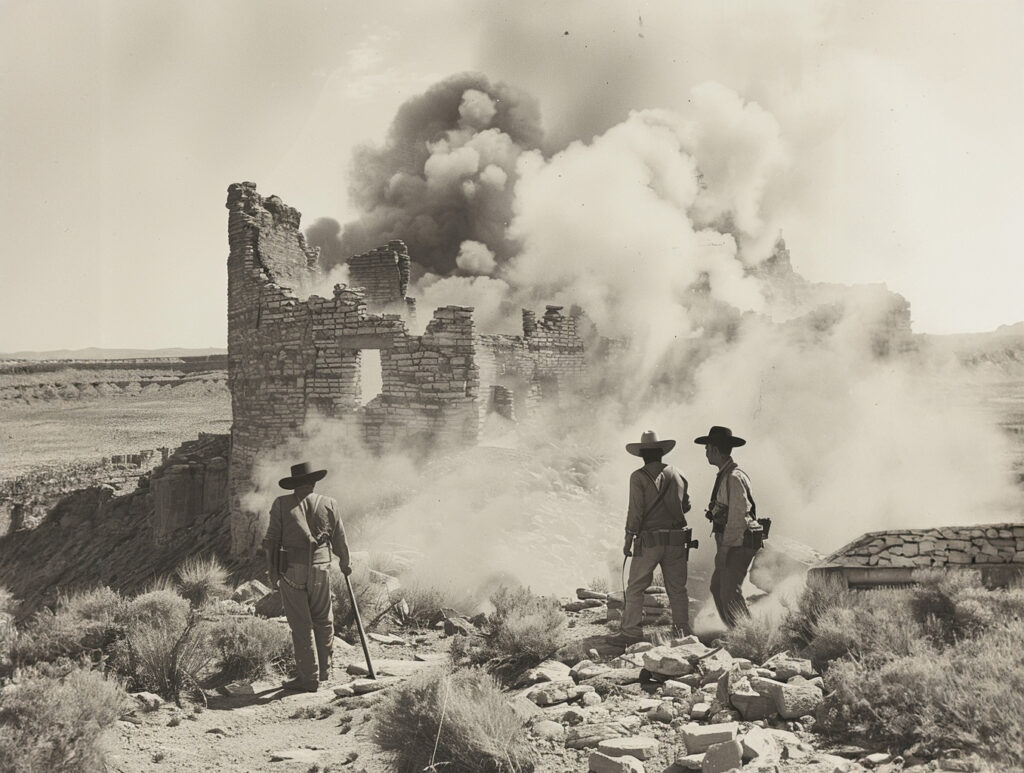The Chaco War (1932-1935) between Bolivia and Paraguay was a brutal conflict driven by territorial disputes and resource competition, leading to profound regional impacts.
The Chaco War, fought between Bolivia and Paraguay from 1932 to 1935, stands as one of South America’s most significant and devastating conflicts. This war was primarily fueled by territorial disputes over the Chaco Boreal region, a vast and sparsely populated area thought to be rich in oil. The intense and bloody struggle left both nations deeply scarred and had lasting implications for regional politics and economies.

What were the reasons for the Chaco War (1932-1935)?
The roots of the Chaco War can be traced back to longstanding territorial disputes between Bolivia and Paraguay. Both countries laid claim to the Gran Chaco region, a semi-arid zone located between the Pilcomayo River and the Paraguay River. The region’s perceived economic potential, particularly after oil discoveries in neighboring areas, intensified these disputes.
Bolivia, landlocked since losing its coast to Chile in the War of the Pacific (1879-1884), was particularly eager to secure access to potential resources and an outlet to the Paraguay River. This would provide Bolivia with a crucial trade route. Meanwhile, Paraguay, recovering from the devastating War of the Triple Alliance (1864-1870), sought to affirm its territorial sovereignty and economic viability.
The tension was exacerbated by the influence of foreign oil companies, which fueled speculation about the Chaco’s oil potential. Additionally, nationalist sentiments and the desire for regional prestige played significant roles in propelling both nations toward conflict. Despite numerous diplomatic efforts to resolve the territorial dispute, rising nationalism and economic aspirations eventually led to an armed confrontation.
Who was involved in the Chaco War (1932-1935)?
The Chaco War primarily involved the nations of Bolivia and Paraguay. Bolivia, with a larger population and better-equipped army, entered the conflict confident of a swift victory. Its army, however, was poorly adapted to the harsh conditions of the Chaco. Paraguay, though smaller and less wealthy, had a well-prepared and highly motivated military force that was better suited to the environment.
Several international actors also played indirect roles in the conflict. Argentina and Chile attempted to mediate, given their regional interests and historical ties. Meanwhile, American oil companies, notably Standard Oil (operating in Bolivia) and Royal Dutch Shell (with interests in Paraguay), had vested interests that influenced political and military strategies.
The populations of both countries were deeply affected, with thousands of men conscripted into military service and significant civilian suffering due to the war’s economic and social disruptions.
The leaders of the Chaco War (1932-1935)
Key leaders in the Chaco War included Bolivia’s President Daniel Salamanca and Paraguay’s President Eusebio Ayala. Salamanca, driven by nationalistic fervor and economic aspirations, aggressively pursued Bolivian claims in the Chaco. His leadership, however, faced internal dissent, culminating in his ousting in 1934 after a series of military failures.
On the military front, Bolivia’s main commanders were General Hans Kundt, a German military advisor whose strategies proved ineffective in the Chaco terrain, and later, General Enrique Peñaranda, who struggled to reorganize the Bolivian forces. In Paraguay, Colonel José Félix Estigarribia emerged as a prominent military leader, his adept strategies and deep understanding of the Chaco landscape leading to numerous Paraguayan victories.
Post-war, Estigarribia became a national hero and was elected President of Paraguay in 1939, though his tenure was cut short by his death in a plane crash in 1940. Peñaranda also became a significant political figure, serving as Bolivia’s President from 1940 to 1943.
Was there a decisive moment?
The tensions between Bolivia and Paraguay escalated into war after a series of skirmishes and provocations in the late 1920s and early 1930s. The decisive moment came on June 15, 1932, when Bolivian forces attacked and occupied the Paraguayan fort of Carlos Antonio López in the Pitiantuta region. This aggressive move was perceived as a direct challenge to Paraguayan sovereignty, prompting Paraguay to mobilize its forces in retaliation. The subsequent engagement marked the official start of the Chaco War, with both nations committing fully to the conflict.
What were the major battles?
The Chaco War featured several significant battles, each shaping the course of the conflict. These battles demonstrated the harsh realities of war in the inhospitable Chaco region.
- Battle of Boquerón (September 7 – September 29, 1932): One of the first major confrontations, this battle saw Paraguayan forces encircle and besiege the Bolivian stronghold at Boquerón. Despite Bolivia’s numerical superiority, Paraguayan tactics and the difficulty of supplying the garrison led to a Paraguayan victory.
- Battle of Campo Vía (December 1933): This battle was a decisive Paraguayan victory, where Bolivian forces were surrounded and forced to surrender. General Estigarribia’s strategic acumen was crucial in orchestrating the encirclement, capturing thousands of Bolivian troops and significant military equipment.
- Battle of Nanawa (January – July 1933): This extended engagement involved multiple Bolivian assaults on the fortified Paraguayan position at Nanawa. The battle showcased the resilience of Paraguayan defenses and the difficulties Bolivia faced in overcoming well-entrenched positions, ultimately ending in a stalemate.
- Battle of El Carmen (November 1934): In one of the largest battles of the war, Paraguayan forces launched a surprise attack on Bolivian positions. Despite fierce resistance, the Paraguayans succeeded in inflicting heavy casualties and capturing vital territory, further demoralizing the Bolivian army.
- Battle of Cañada Strongest (December 1934 – March 1935): This prolonged battle involved intense combat as both sides vied for control of strategic locations. Paraguayan forces, led by Estigarribia, managed to outmaneuver and decimate Bolivian troops, leading to significant territorial gains.
These battles highlighted the brutal and attritional nature of the conflict, with both sides suffering heavy casualties. The Paraguayans, often outnumbered, relied on superior tactics and intimate knowledge of the terrain to secure their victories.
Was there a turning point?
The turning point in the Chaco War came with the Paraguayan victory at the Battle of Campo Vía in December 1933. This battle marked the beginning of a shift in momentum, as the encirclement and capture of a significant Bolivian force drastically weakened Bolivia’s military capability and morale. Following this defeat, Bolivia struggled to mount effective offensives, and Paraguayan forces gained the upper hand, steadily advancing and capturing more territory. This turning point underscored the importance of strategic leadership and terrain familiarity in determining the war’s outcome.

The consequences of the Chaco War (1932-1935)
The Chaco War had profound consequences for both Bolivia and Paraguay. For Paraguay, the war bolstered national unity and pride, with the country emerging victorious despite its smaller size and limited resources. The conflict, however, resulted in significant loss of life and economic strain.
For Bolivia, the war was a national trauma. Defeat exacerbated political instability, leading to several military coups and deep societal divisions. The loss also undermined Bolivia’s economic aspirations and territorial claims, prompting a period of introspection and reform.
Internationally, the war highlighted the volatility of South American geopolitics and the influence of foreign economic interests in regional conflicts. The League of Nations’ eventual mediation and the 1938 peace treaty, which largely favored Paraguay, underscored the challenges of maintaining regional stability.
–
The Chaco War (1932-1935) stands as a stark reminder of the destructive potential of territorial disputes and resource competition. The conflict reshaped Bolivia and Paraguay, leaving lasting scars and influencing their political trajectories. Despite the war’s devastation, it also provided valuable lessons on the importance of strategic planning, the impact of environmental factors on military operations, and the complexities of international diplomacy in resolving conflicts.
Back to the Wars section